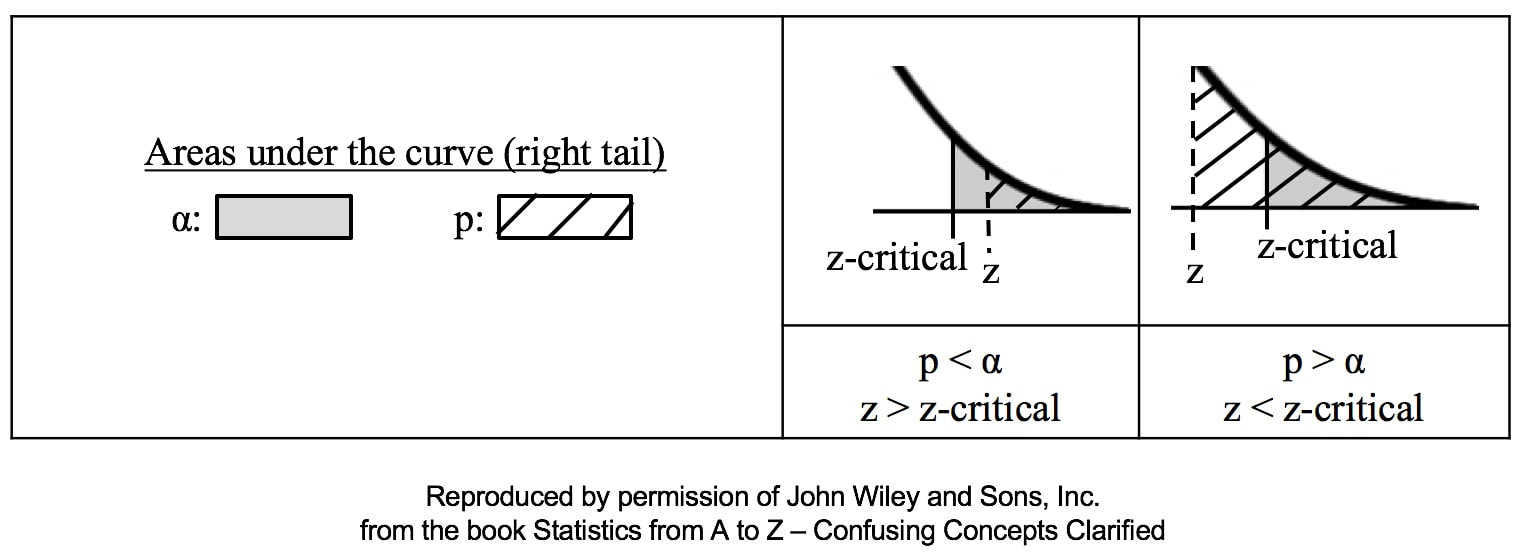|
p is the Probability of an Alpha (False Positive) Error. Alpha (α) is the Level of Significance; its value is selected by the person performing the statistical test. If p < α (some say if p < α) then we Reject the Null Hypothesis. That is, we conclude that any difference, change, or effect observed in the Sample data is Statistically Significant. The p-value contains the same information as the Test Statistic Value, say z. That is because the value of z is used to determine the p-value. As shown in the following concept flow diagram,
Similarly α contains the same information as the Critical Value. So comparing p and the Critical Value is the same as comparing Alpha and the Test Statistic value. But the comparison symbols ( ">" and "<") point in the opposite direction. That's because p and Test Statistic have an inverse relation. A smaller value for p means that the Test Statistic value must be larger.
1 Comment
Great article, Jim Frost! Thank you for explaining the relationship between p-value and test statistic value, and how they contain the same information. It's crucial to understand that the comparison of p and critical value is the same as comparing alpha and test statistic value, as they point in opposite directions. This information is essential to ensure accurate and reliable statistical analysis.
Reply
Leave a Reply. |
AuthorAndrew A. (Andy) Jawlik is the author of the book, Statistics from A to Z -- Confusing Concepts Clarified, published by Wiley. Archives
March 2021
Categories |




 RSS Feed
RSS Feed